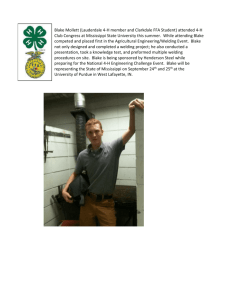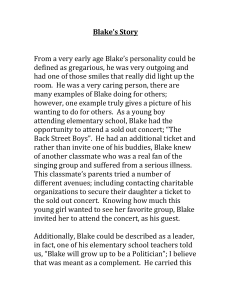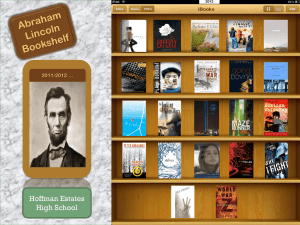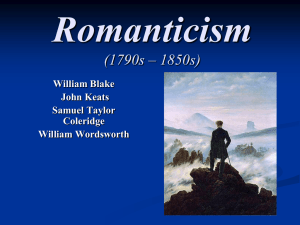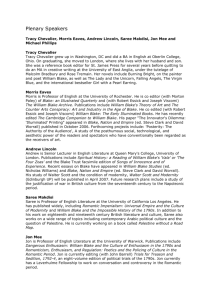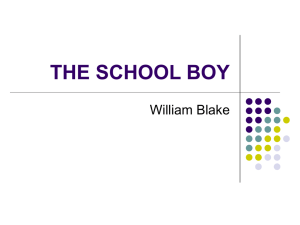CALL and the L2 Curriculum
advertisement
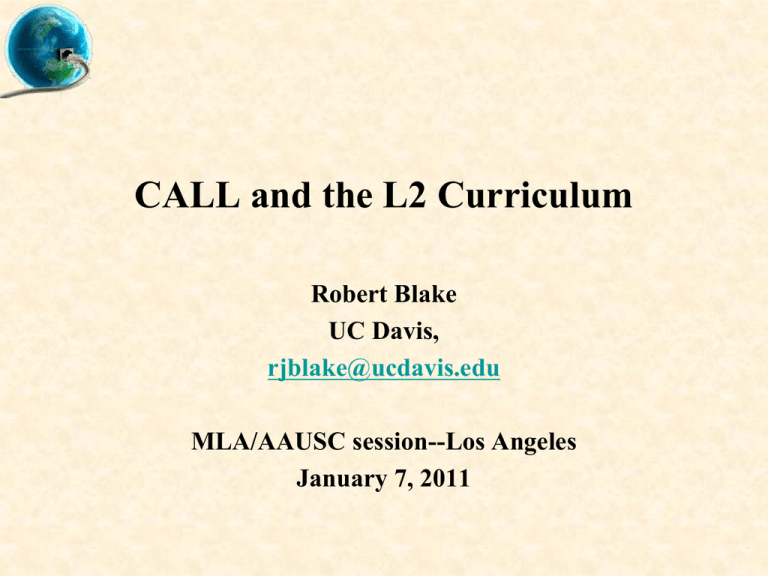
CALL and the L2 Curriculum Robert Blake UC Davis, rjblake@ucdavis.edu MLA/AAUSC session--Los Angeles January 7, 2011 Why do it? • Tracy Terrell, Natural Method (1983) – “keep them happy!” EXPERT: 10,000 hours • Malcolm Gladwell: Outliers (2008) – Bill Gates, UW “Timesharing” • To reach level 3: – 700 h. for Romance – 1,500+ for category IV lgs. – 2,400 h. in 4-yr. B.A. • Classes: 150/yr. (50 X 3) • Home study: 350 • 600/yr X 4 = 2,400 hours at end of B.A. The New People (our students) • On November 9, 2004, $125 million was spent on the first day release of Halo 2 • Facebook, social computing • Texting • Mobile apps • Brave New World? • Our “new students” are captivated by technology Which technology and how? • Blended (curriculum assisted by tech) • Hybrid (half in class + half online) – The best of both worlds? (SRI meta-analysis) http://www2.ed.gov/about/offices/list/os/technology/net.pdf • Virtual (all online) – Asynchronous only – Synchronous component added: • Text chat-IM • Video/audio/text chat The Ideal Hybrid Learner? (Blake & Arispe, forthcoming) • Study of 64 L2 hybrid learners’ course outcomes correlated with: – Personality traits (Big Five Inventory) • Extraversion, agreeableness, conscientiousness, neuroticism, openness • auditory, kinetic, visual – Verbal abilities (Shipley Living Scale) • Verbal intelligence, • abstract intelligence – Learning Preferences • 2 days in class • Online “textbook” TESOROS (www.tesoros.es) • Wimba Classroom chats with two peers and instructors once a week. Personality Traits: Big Five Inventory (BFI) Learning Preferences byVerbal Abilities (Shipley) Distance Learning in the UC • • • • • • • Spanish Without Walls--UC Davis Extension Spanish 2V-3V, UC Davis main campus Arabic Without Walls--UC Irvine Punjabi Without Walls--UCSB, Fall 2011 Quechua, UCLA, in progress Filipino, in progress New UC online pilot project Types of CALL: • Tutorial CALL – Discrete programs (Rosetta Stone, Hot Potatoes, WordChamp) – iCALL (e-Tutor, Robo-sensei, Tagarela) – Mobile Apps (MindSnacks, Arabic Flash Cards) – LangBot (S. Payne, Amherst College) • • • • CMC (computer-mediated communication) Telecollaboration (tandem via videoconferences) Social Computing (Facebook, LiveMocha, SL) Games (WoW, Xenos Isle) Word Champ Langbot • • • • A vocabulary “IM buddy” Translations of words and collocations Program learns as it goes All data archived for research E-Tutor • Heift, T. (2010). Developing an intelligent language tutor. CALICO Journal, 27, 443459. • E-Tutor has traced the L2 interlanguage of over 5,000 students over a period of five years. CMC • Wimba Classroom: – http://ucdavislive.wimba.com/launcher.cgi?room=Roadmap_2010 • • • • • Elluminate Skype NetMeeting Adobe Connect others What about games? • Blake, GUP (2008) • No chapter on games Educational Games 2006 Summit on ed games: “Harnessing the Power of Videogames for Learning” (2006) Students only remember: – – – – 10% of what they read, 20% of what they hear; 30% if they see visuals, too; 50%, if they watch someone model something while explaining it; – 90% if they engage in the job themselves, even if only as a simulation Characteristics of a game • • • • • Designed experience Role playing Agency Hypothesis testing Practice and feedback on demand Prensky (2001) • • • • • • • • • • • • Games are a form of fun. That gives us enjoyment and pleasure. Games are a form of play. That gives us intense and passionate involvement. Games have rules. That gives us structure. Games have goals. That gives us motivation. Games are interactive. That gives us doing. Games have outcomes and feedback. That gives us learning. Games are adaptive. That gives us flow. Games have win states. That gives us ego gratification. Games have conflict/competition/challenge/opposition. That gives us adrenaline. Games have problem solving. That sparks our creativity. Games have interaction. That gives us social groups. Games have representation and story. That gives us emotion. Gee (2007) Critical Learning Principle: Psychosocial Moratorium Principle: Identity Principle: Amplification of Input principle: Achievement Principle: Practice Principle: Regime of Competence Principle: Multiple Routes Principle: Situated Meaning Principle:. Multimodal Principle. Explicit information On-Demand and Just-in-time principle: Discovery Principle. Insider Principle: Material Intelligence Principle: Types of games (Thorne, Blake, Sykes, 2009): • Social virtualities, such as Second Life • Commercial MMOs, such as WoW • Made-for-education synthetic immersive environments, such as Croquelandia SL cities Barcelona: 169, 68, 23 Ciudad Bonita: 162, 99, 29 LanguageLab.com Types of games • Social virtualities, such as Second Life • Commercial MMOs (massively multipleplayer Online Role Playing Games), such as WoW • Made-for-education synthetic immersive environments, such as Croquelandia, Forgotten World, LiveMocha Put WoW screen shot here Types of games • Social virtualities, such as Second Life • Commercial MMO’s, such as WoW • Made-for-education synthetic immersive environments, such as Croquelandia (Sykes 2008) or The Forgotten World (LGN 2009) Croquelandia (Sykes 2008) LearningGamesNetwork Symbol TriWords Forgotten World >>> Xenos Isle • XENOS: http://xenos-isle.com – Alex Chisholm (LearningGamesNetwork) – a open-platform gaming environment for language learning first instantiated with Chinese ESL – Concentrated on ESL learners to date but LGN invites collaborators who want to use the platform for FLs. XENOS: http://xenos-isle.com Game inventory Single-player • TriWords: match words/definitions • Symbols: symbols to convey meaning • Word Scrambled: IPA symbols/sounds Multiplayer • Mail Drop: pass messages on to other players • Empty-handed: match rhymes/syllable/PoS/tenses • InTense: put sentences on a timeline using verb clues • Rails: collect and ship items in order to fill orders Tutorial CALL <=> (S)CMC References • • • • • • • Blake, R. (forthcoming). Current Trends in Online Language Learning. ARAL, 30. Blake, R. & Blasco, J. (2001). TESOROS. BeM. http://www.tesoros.es. Blake, R. & Arispe, K. (forthcoming). Individual Factors and Successful Learning in a Hybrid Course. Cobb, T. (007). Computing the vocabulary demands of L2 reading. Language Learning & Technology, 11, 38-63. Heift, T. (2010). Developing an intelligent language tutor. Calico Journal, 27, 442459. Thorne, S., Blake, r. & Sykes, J. (2009). Second language use, socialization, and learning in Internet interest communities and onine games. Modern Langauge Journal, 93, 802-821. U.S. Department of Education. (2009). Evaluation of Evidence-Based Practices in Online Learning: A Meta-Analysis and Review of Online Learning Studies. Washington, D.C. http://www.ed.gov/about/offices/list/opepd/ppss/reports.html ENJOY CALL in 2011! Robert Blake Rjblake@ucdavis.edu

